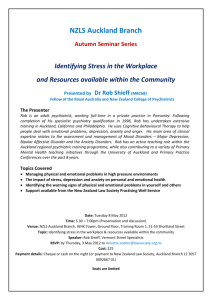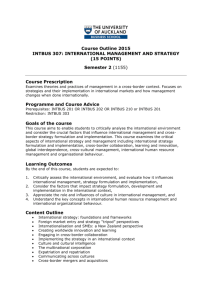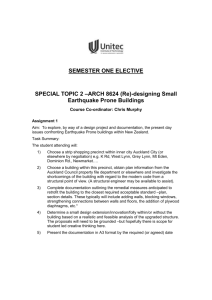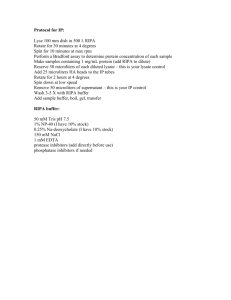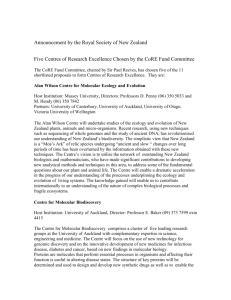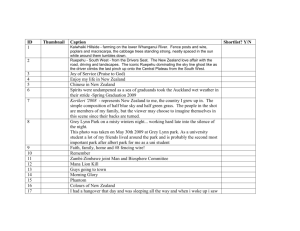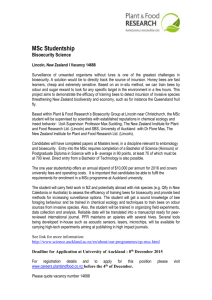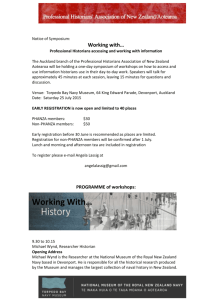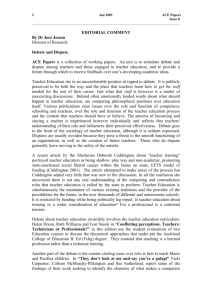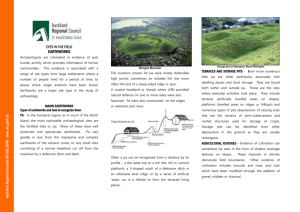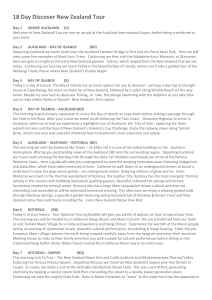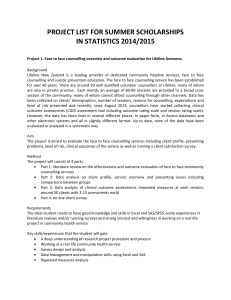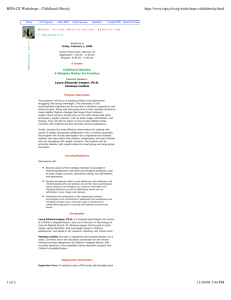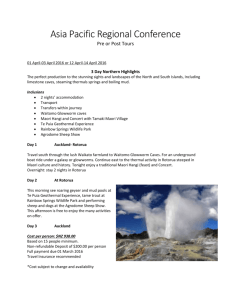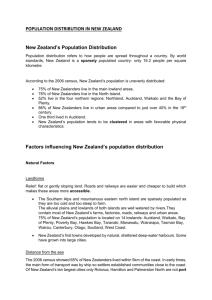New Zealand History from Below: Lessons for Today*s Activists
advertisement
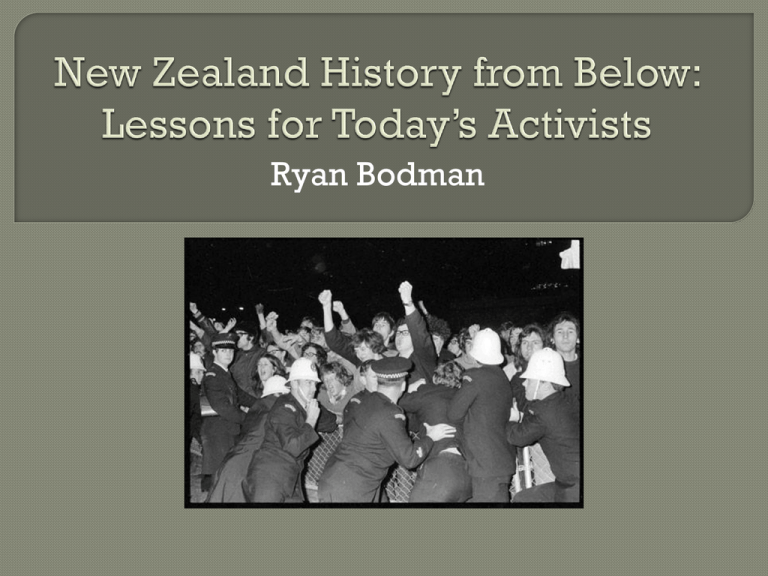
Ryan Bodman Case Study: The Passive Resisters’ Union 1912-1914 Lesson: Establish leverage over your opponent ‘We … recognise that all wars are a ruse of the capitalist class to set the workers of this country and the workers of other countries at each other’s throats. We recognise no enemy than the hereditary enemy of our class, the employers of labour in this and other countries.’ ‘to resist coercion, conscription and compulsory military training under all circumstances and in defiance of all pains and penalties which may be imposed’. ‘… the situation at Ripa Island is simply defeating the ends of the Defence Department. The authorities have collected there a group of the most prominent resisters, and the lads have successfully defied authority.... Ripa Island, in fact, is in danger of becoming simply a centre of antimilitarist propaganda, where young men are taught that they can defy the law. People who have supported the Defence Act all along are saying that it would be better to let these youth go than to have them posing as martyrs and proving the inability of the Defence Department to apply real compulsion.’ NZ Tourist Dept. Government Sanatorium Ripa Island. Situated across the water from Lyttleton. … Windows frosted to secure privacy and seclusion. Darkrooms for visitors. To ensure good fishing, no outside boat allowed with 200 yds. Burglar proof fences. ADMISSION by invitation ONLY. Case Study: The Occupation of Takaparawha/Bastion Point 1977-1978 Lesson: Consider public opinion when seeking to harness the power of the grassroots ‘During the Bastion Point occupation, just saying Kia ora … they’d look at you in a funny way, and Maori tikanaga … was just mumbo jumbo stuff…. Bill [Anderson] … made … a point that [the Auckland Trades Council] had to support the occupation of Bastion Point…. [Robert] Muldoon wanted to develop the whole place into luxury housing for his rich mates. So Bill was the secretary of the Northern Drivers’ Union and he went around selling the idea of a green ban, not because it’s Maori land, because unionists in those days were just as racist as some bloody tories. It was the fact that this is going to be for rich people and it’s not going to be for poor working people so that’s how he sold the green ban to his members.’ Case Study: The Save Manapouri Campaign 1960s - 1972 Lesson: Use your energy effectively Bibliography: Social Movement Theory : Daniel Hunter, Strategy and Soul: A Campaigner’s Tale of Fighting Billionaires, Corrupt Officials, and Philadelphia Casinos, Philadelphia, 2013. Hillary Moore and Joshua Kahn Russell, Organising Cools the Planet: Tools and Reflections to Navigate the Climate Crisis, Oakland, 2011. Bill Moyer, Doing Democracy: The MAP Model for Organizing Social Movements, Nanaimo, 2010. New Zealand History : Ryan Bodman, ‘“Don’t be a conscript, be a man”: A History of the Passive Resisters Union, 1912-1914”, Honours Dissertation, University of Auckland, 2010. Aroha Harris, Hikoi: Forty Years of Māori Protest, Auckland, 2004. Roger Wilson, From Manapouri to Aramoana: Environment, Auckland, 1982. The Battle for New Zealand’s David Young, Our Islands, Our Selves: A History of Conservation in New Zealand, Dunedin, 2004.

